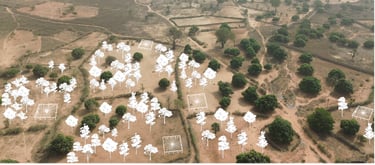
Vision for Senegal
Féro is principally focused on transforming monoculture cropland in Senegal into thriving, biodiverse and most of all highly profitable farming systems for smallholder farmers. We want to see nature return to the ~3,89 million hectares of deforested lands for agriculture in Senegal. We need agricultural ecosystems that benefit both people and the planet. Real, lasting impact is only possible when reforestation also strengthens farmers’ livelihoods. The core reason we know they will choose our approach is simple: it offers a stronger, more profitable business case for smallholders.
4000 Ha
0,8 Ha
Reforested So Far
Reforested By 2035
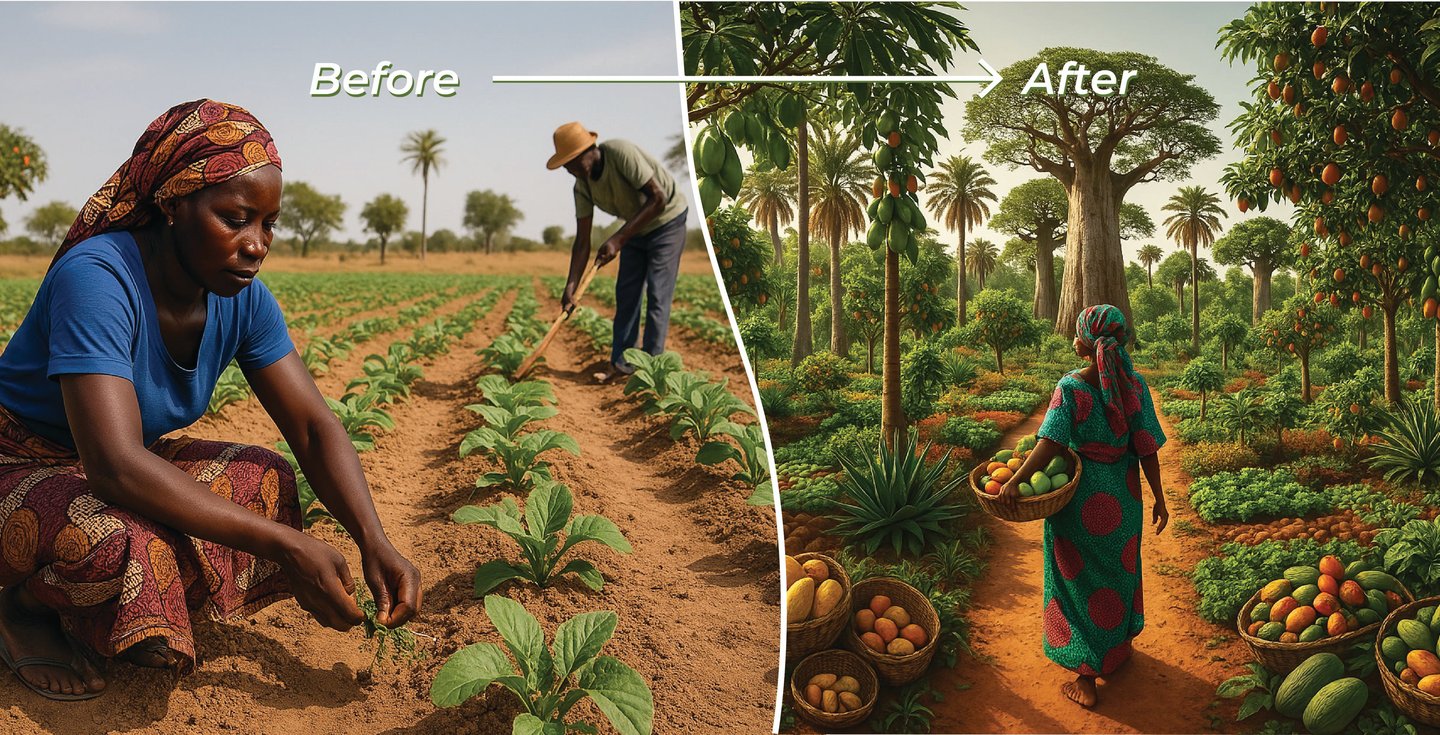

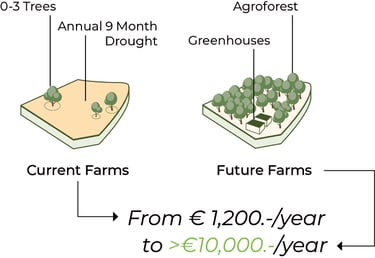

Reforesting with Greenhouses

Better Business Cases
The starting point of our agroforestry design was focused on generating significantly higher incomes for the farmers who will transform their land. On average, smallholder farmers in Senegal earn around €1,200 per year. With our model, the agroforest alone surpasses this income after just three years. Combined with a 400 m² mid-tech greenhouse, smallholder farmers can generate up to €23,800 in annual revenue after 10 years, once the agroforest has reached full maturity and the farmers have mastered greenhouse cultivation techniques.
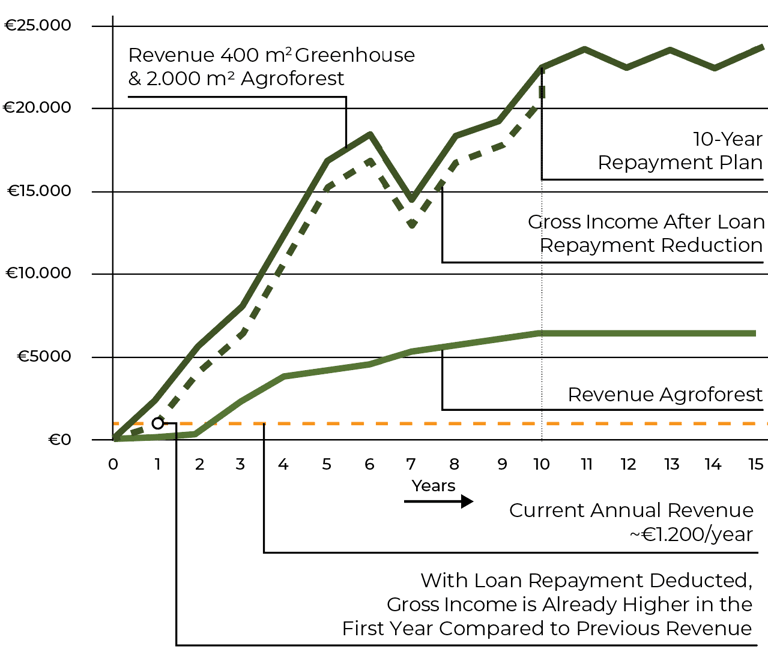

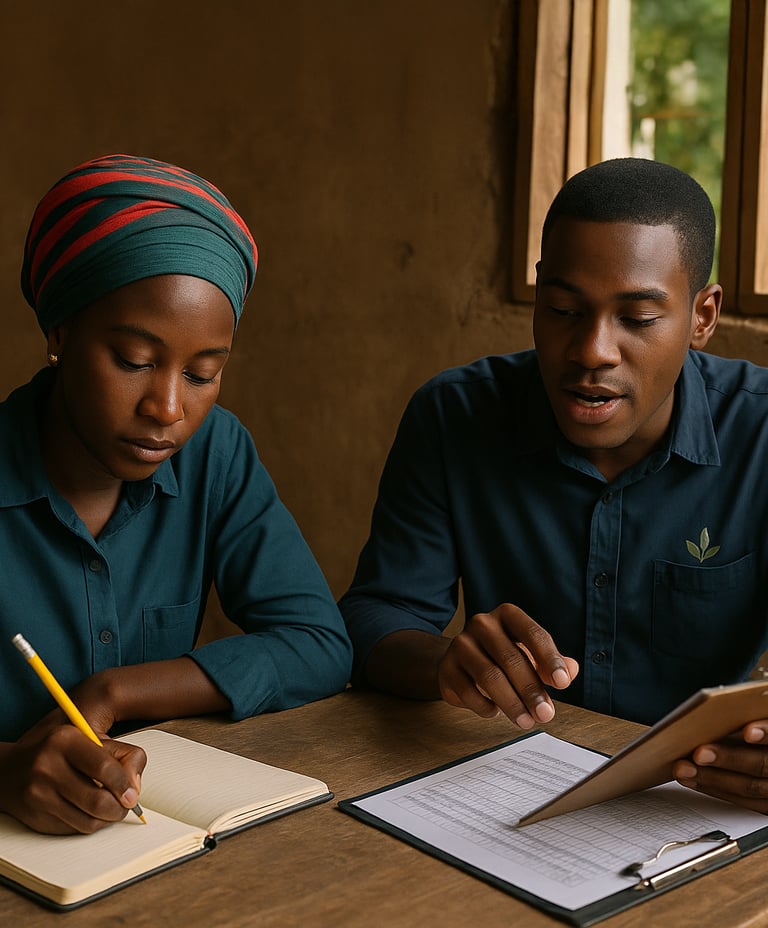


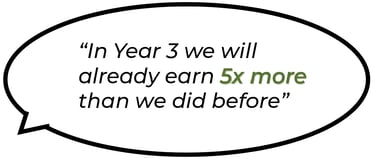

Expansion Plan
Senegal lies within the Great Green Wall (GGW) initiative, a continental effort to combat desertification by planting trees along the southern edge of the Sahara. Through strategic partnerships and a franchising model, we aim to scale our agroforest and greenhouse system across the country, with a strong focus on the GGW corridor.
Although the subhumid tropical regions of Ziguinchor, Sédhiou, and Kolda are not officially part of the GGW, they are also included in our strategy. These areas face severe deforestation for cropland expansion, timber, and fuelwood extraction, while their communities remain economically marginalized. Our model offers a sustainable alternative to these practices.
We also include the centrally located regions of Fatick, Kaolack, and Kaffrine in our expansion plan which are also not in the GGW region. In these areas, land is almost entirely used for cropland agriculture, creating higher vulnerability to desertification due to the lack of tree cover. Integrating agroforestry and greenhouse systems here can help restore ecological balance and significantly improve rural livelihoods.



